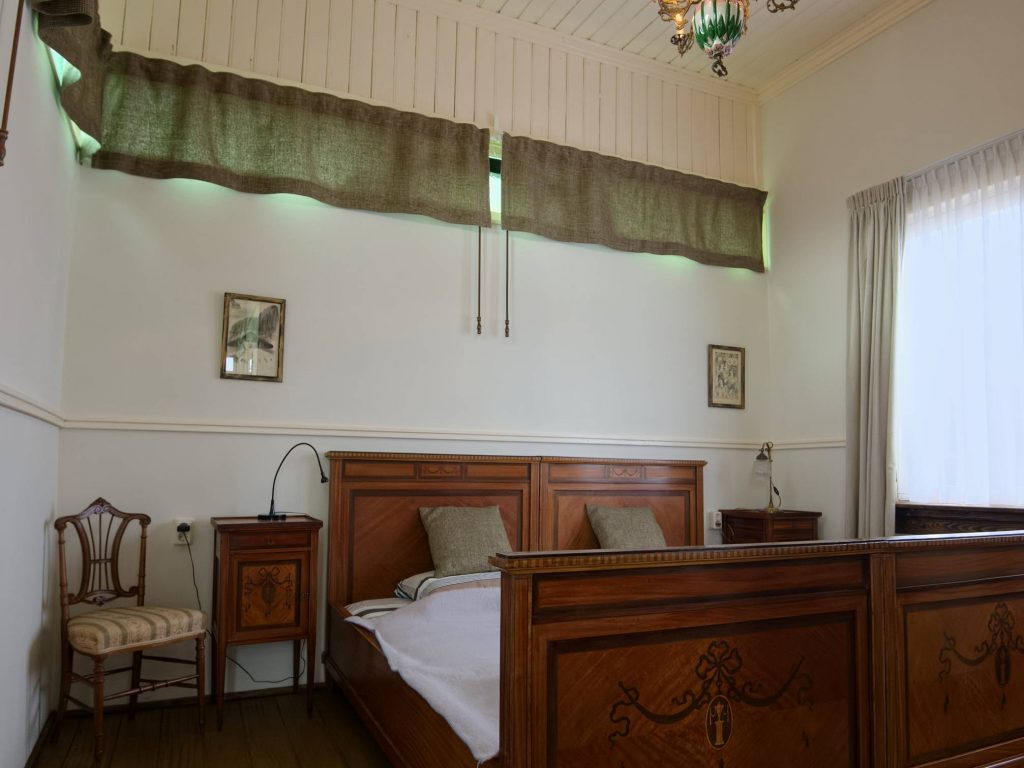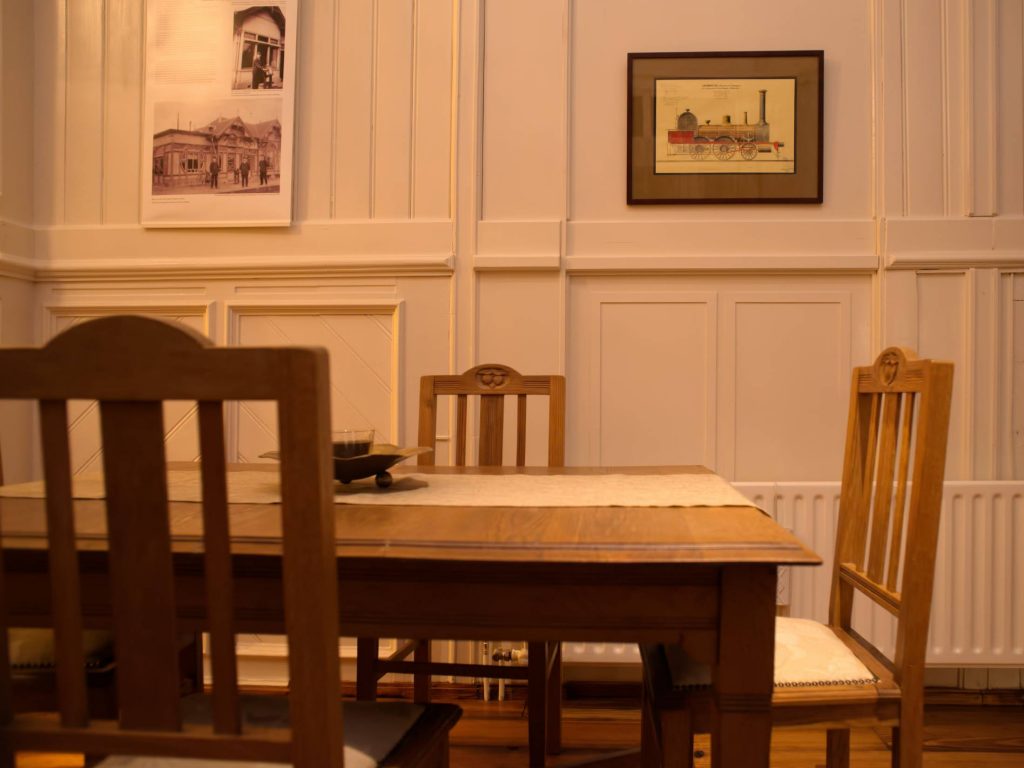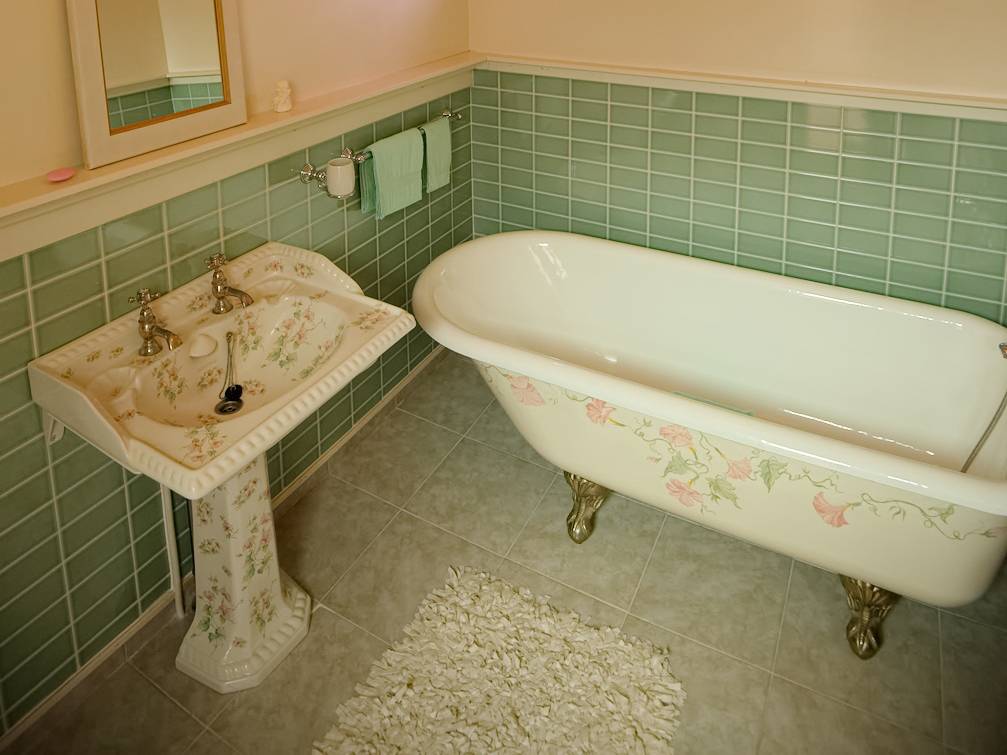Sleeping by the tracks
Station Houthem-Sint Gerlach, Valkenburg
Station Houthem lies on the railway line between Maastricht and Heerlen, running east to west – just like the Via Belgica, which runs only a few metres away. The Romans had already laid this road quite cleverly, on the border between wet and dry ground and with minimal relief. Centuries later, it still turned out to be the most convenient route for the railway.
Spend the night in the oldest wooden station building in the Netherlands – it’s possible in Houthem-Sint Gerlach. In 2012, this characteristic wooden house from 1903 was saved from demolition and transformed into a unique holiday home. The allure of the 1940s – the style on which the design of the building is based – has been fully restored, and the vintage interior adds to the authentic atmosphere.
Behind the holiday home lies a small orchard with apple, pear, and plum trees – especially beautiful during blossom season. Next to the house, a vineyard is being planted. Grapes thrive on the chalky slopes of South Limburg, something the Romans already knew.
Discover
- Sleep in the oldest wooden station building in the country
- Visit the beautiful Château St. Gerlach
Fun to know
- Royal recognition
- At the festive reopening of the renovated station building in 2015, there was a very special guest: Prof. Mr. Pieter van Vollenhoven. The occasion was the awarding of the Pieter van Vollenhoven Prize, given for successful heritage redevelopment projects. Preserving cultural heritage allows future generations to learn from it and enjoy it..
- Wine in South Limburg
- Sunny hillsides, chalky soils, and a slightly warmer climate than elsewhere in the Netherlands make South Limburg ideal for viticulture. The Romans already discovered this 2,000 years ago when they settled here. Napoleon later eradicated winegrowing in the region to protect French wine. In recent decades, vineyards have returned, and their popularity is growing: new vineyards are planted every year.
- Fruity heritage
- Many fruit and nut trees that grow here today were first introduced by the Romans. Walnuts, cherries, chestnuts, and plums were previously unknown in this region. For centuries, these fruits have been part of the local cuisine of South Limburg. On a small scale, such as in the orchard next to Station Houthem, traditional tall fruit trees are still cultivated. This is the age-old method of fruit growing, dating back to Roman times, though in recent decades it has been almost entirely replaced by easier-to-harvest low-stem varieties.
- The road beneath the road
- The Romans were the first true road builders. Many of our roads still follow Roman predecessors. They never built roads arbitrarily: first, a surveyor was sent to determine the fastest and best route between two points. Romans disliked detours, and the Via Belgica runs fairly straight through South Limburg – at least, that is our assumption. Its exact course has only been established in a few places. In Voerendaal, even a complete cross-section of the road – cart tracks and all – has been excavated. You can view it in the Thermenmuseum in Heerlen.


